As the island of Zakynthos came into view, we officially entered the Ionian island group of western Greece. Last year, we had toyed with the idea of visiting Zakynthos, as we made our way south from Croatia, but time was not on our side as we pushed to make a date with friends in the Aegean. This season, with neither Karen nor I willing to take the Covid risk of leaving Greece and tempting clearance into another country, we were staying local. We had six more weeks in Greek waters, which gave us carte blanche to see every nook and cranny in the Ionian.
There are a handful of iconic images that Greeks use to tempt tourists to their land. There is, of course, the Parthenon, and the windmills on Mykonos, as well as the cliffs at Santorini, and finally there’s Shipwreck Beach, which coincidentally resides on Zakynthos. If you’re an Instagram nut, Shipwreck Beach is likely on your short list, to pose with heart-shaped hands, a pouty face, or a simple thumbs up.
We were aiming for the west coast of Zakynthos, thinking that we could make our way up to the north end where Shipwreck Beach resided if we found a calm moment along the normally exposed western shore. But after our 65 mile run from Pylos, all we wanted for our immediate arrival was the closest safe anchorage, which according to our Navily app was the benignly named ‘Scenic View’ cove. Being a crowd-sourced app, place names don’t always correspond with actual names on published charts, and when a spot has no obvious legacy name, it becomes a free-for-all naming competition.
‘Scenic View’ was by no means an overstatement. A bulging pinnacle off the point entertained us by day, with its cave and passageway to the adjacent beach, and at nightfall silhouetting a dual sunset and moonset. We were off to a fine start on our slow-roll Ionian adventure.
At daybreak, we continued our strategy of leaving early before the Northwest winds showed themselves. The pinnacle at Scenic Cove had just been a teaser. This west coast of Zakynthos was dramatic, rugged scenery rarely found elsewhere. And perhaps because of it, I felt an abject remoteness. An hour north, we tucked into a glassy cove, one of so many on this undulating coastline. There was no name on the chart, but more concerning, no depth soundings. With water clear enough to see 20 meters below, we crept into the center, avoiding several dark colorations that were likely rocky mounts shooting up from the seafloor. We were all alone and responsible for making our own fun, which, on this occasion, required some cave exploring along the shore. In one, we could hear deep throated groans as the water surged in and retreated, sounding a lot like an angry monster. In another, a waterproof light in my hand allowed me to push further, to a narrow gap and a larger pool of water further into the dark innards. Suddenly I felt a push of wind in my face and finally a powerful whoosh of air and sea spray, throwing me back in fright! No more exploring in dark caves for me today! As we dinghied back to Sea Rose, the smell of sulphur was strong and steady. If there were volcanic vents in the area, it was all the more reason to move along. But in my final act before departure, I made a first-reviewer entry in Navily, naming this spot Ormos Theio – Sulphur Bay. Future explorers, take note!
The winds were building offshore, and a visit as far as Shipwreck Beach did not seem in the cards today unless we had a particular affinity to rolling from side to side all night in our bunk. Instead, we nosed Sea Rose into another unnamed cove with white cliffs so high above us, my neck was sore from the constant gawking. I had to know for sure the height of these cliffs, so I pulled out the drone and sent it up to measure – 600 feet was the definitive answer! Here, two small day boats were lingering with their skippers, as guests wandered the bright white beach. But soon they were moving on to other sights and we had the place to ourselves. We had been handed the golden keys to the kingdom. Slipping between the shore and the clear water shallows, bright white sand and boulders around us, and the kiss of the sun’s rays, I was beginning to wonder if there should be a LifeFivePointZero.
Soon enough we were back to (and still nothing to fret about) LifeFourPointZero, as we struggled to free the anchor chain from a death grip around the bottom of a boulder. Karen didn’t hesitate in the least to jump back in the water, guiding me on which way to drive Sea Rose to unwrap us from a cove that apparently didn’t want to see us leave. Our son Zachary used to wrap himself tight in a blanket, tight as a baby burrito, regardless of the temperature. The name I gave to this new-to-Navily-cove was an easy one – Ormos Zachari. It would thrill me to no end to come back in 20 years and find these new names on the chart. I ask you, dear reader, to help me popularize their use!
What we missed by not seeing Shipwreck Beach we gained by a fantastic downwind sail back along the coast. After so many days of either glassy calms or contrary winds, it felt good to put Sea Rose through her paces again. We stayed a little further offshore, giving us a more sweeping perspective on this west coast of Zakynthos. We couldn’t see the details of the caves and beaches, but we more fully appreciated the grandeur of this coastline. We had been looking at individual paint strokes; now, taking a step back, we could see Monet’s true work.
As we rounded the southern tip of Zakynthos, we trimmed the sails for a more close-hauled tack. Curiously, we curved around the point a full 90 degrees, and the wind curved with us, putting us on a heel the whole time and sending us racing across the increasingly protected inner bay of Keri Beach. Feeling the power of the wind and Sea Rose’s response, it felt like we were conductors on a wild freight train, scattering sparks down the track.
Keri Beach met our need for grocery shopping, if you could find your way around all of the travel agencies and rental boat kiosks. We had just come in from the wild and rugged west coast. This town seemed like a honky-tonk resupply post from the rough and ready American Wild West. It wouldn’t surprise me if John Wayne soon road in on his trusty stead, and dismounted for a stiff drink at the local taverna. To its credit, there was plenty of space for anchoring, and we were in company of a wide variety of craft, including a large off-shore race boat. Keri Beach is adjacent to a national marine park, meant to reduce boat traffic and human interference to promote the breeding of turtles. A few wayward turtles spilled over into our anchorage and teased us at the surface until we could fumble around to find a camera, and then they’d promptly dive below.
We turned our attention to the east coast of Zakynthos, not expecting anything that could be as spectacular as our discoveries on the west coast. The center of activity on the east coast is Zakynthos Town, a waypoint for ferry arrivals and departures, and several large tour operators. We had heard that the town quay, normally the best option in Greece due to their low price and proximity, was fraught with constant boat wakes and the ensuing standoff between concrete and fiberglass. There was plenty of room on the outside of the harbor’s jetty and with the calm weather forecast, we quickly settled on this Plan B.
Our expectations were modest for Zakynthos town. In 1953, the city suffered a devasting earthquake that destroyed much of the traditional look of the city. Those that remember the city before the quake speak of the rebuilt city in diminutive terms. And I’m sure if someone rebuilt my home town, I would be reluctant to shower praise on the new. But we had no old to compare to the new. It just looked like a modern, bland city and it struck no emotion chord with us. We needed very little, at the moment just the port police and customs offices to help us extend our TEPAI, Greece’s cruising permit. We had tried on several previous occasions to pay Greek officials for the pleasure of one more month’s cruising fun, but either the local office was closed that day, or they wouldn’t take cash, or some other bureaucrat silliness. In town, we were first directed to the port police, and there, we were assured that if we came back the next morning, an officer would take care of the renewal. I had not realized that today was a local holiday. The next morning, I returned and was told that, no, in fact the port police does not issue renewals. I had to go to customs. This was sounding like another day of run-arounds. At the customs office, with a long plexiglass covid barrier separating shorts-and-t-shirt me from four smartly dressed officials, they didn’t shoo me away. But it took all four of them, with each seeming to have a small jigsaw piece of knowledge that was critical to solving the overall TEPAI puzzle. I practiced my best Southern hospitality and avoided extended eye contact while three ring binders were opened up on wide wooden desks, keyboards were tapped on, chins were scratched, loose power cords were jiggled, and passports were photocopied. It was all very professional though, and I felt none of the antagonism, and guilty-until-proven-innocent style the last time I had done this in Crete.
During our dinghy rides between the outside anchorage and the town quay, we had noticed a boat nearby with a U.S. flag. Most of the time this is a misnomer, as boaters from Turkey, Spain, and other countries with onerous boating laws will get an agent in Delaware to register their boat with the US Coast Guard and therefore circumvent local regulations. The tell tale sign is a puny American flag. But here was a boat owner proud enough to fly a respectable flag, and further more, their hailing port was Long Beach, CA. Still, I was hesitant to stop by. I’m not sure why, and I feel terrible knowing now who was onboard, but at the time I wondered if it was going to be some pompous American, unfriendly and standoffish. His boat was big and beautiful enough to command an attitude. We skipped a cordial hello and settled back in our cockpit to start to make dinner plans. Moments later, to my surprise, Karen called out, ‘Hey, the guy from that boat is coming over!’ A middle-aged guy with a broad smile pulled up to our stern in his seaworthy dinghy and greeted us in undeniable American English. After the usual where are you from, where are you going conversation, he invited us to go ashore in his dinghy and have a drink. We liked the drink idea but chose to take our own dinghy – we had just met, after all! With Covid, every taverna was desperate for patrons and drinks were easy to come by. So was the conversation. Theo was a Greek citizen but he had left at 19 to try college in California, knowing very little English. To our surprise, he said his math and science skills were far more advanced than his fellow students, and he quickly found supplemental income as a tutor. Later, he moved to UC San Diego, right down the street from where I grew up, and studied computer science. More drinks and an evening stroll through a post-siesta town square gave us time to get to know him. He had spent several years sailing with his wife through the South Pacific, which was all the credibility I needed. They had decided the next logical step was a circumnavigation, and the previous season they chose to buy a new Amel 50, the Rolls Royce limited production version of the sailing industry, all tricked out for going around the world. Sadly, they had divorced the prior winter, and combined with Covid, this had left Theo a single solo sailor. The desire to whisk us ashore for a drink and conversation was starting to make sense.
With some people – a future spouse, a childhood friend, an airline flight seatmate you may never see again – conversation comes effortless and deeply. This was how it happened with Theo. We returned to the boat after midnight, fired up the BBQ for the chicken that had been planned earlier, and didn’t say our good nights to Theo until 2:30am! Although we had each other, Karen and I had forgotten how much we missed our typical fully booked calendar of visiting shipmates, and the laughs and libations that followed. Here was Theo, a Greek who could answer our endless questions about local life and culture in Greece, and still understand our American idioms and humor – a perfect match!
Awkward in the way a first date ends, feeling good but not sure if the chemistry will extend to future fun, we said our goodbyes to Theo the next morning and headed north to the Blue Cave, a popular tourist destination and one we hoped Theo would join us at later. The bar was set pretty low, with our previous Blue Grotto experience on Capri, so we didn’t expect much. Once we arrived at the Blue Caves, it was sensory overload, especially compared to our solitude on the west coast. Private boats and rentals were anchored every which way in a tiny cove just south of the actual Blue Cave. Some boats ran lines ashore, others swung freely, or more accurately, haphazardly. Charter boats, with nerves-of-steel captains, backed their boats right into the cliff side, like it was just another day in the week. We were about to ditch the whole idea when a sailboat scooted out and we charged in to take their position, dropping the anchor in water that was really too deep for safety, and swimming two lines ashore to tie off on rocks. Tour boats that were accustomed to tracing the shoreline for the patrons viewing pleasure needed a close eye. Bathers, who chose to experience this place without a hotshot captain, were busying diving off the cliff ledges causing us stress as cavalier captains appeared to pay no attention to their little bobbing heads as they slalomed through the boat anchorage while turning their heads to the stern to regale their clientele. It was all too difficult for us to watch, but we also didn’t feel safe leaving our boat. Gradually, more anchored boats took off, and bathers toweled off to find refreshment at the taverna bar on the clifftop. Just before dusk, we pinched ourselves as the last boat left, and we headed out in our self-guided tour of the Blue Caves in our dinghy.
The Blue Caves are at the very northern tip of Zakynthos, and within striking distance of Shipwreck Beach. The next morning, we left early in order to get there before all of the tour boats showed up. We were bouyed by the fact that Theo also wanted to join us. The plan was to stay at Shipwreck for sightseeing, and if the conditions warranted, an overnight too. Theo, with his bigger engine, was approaching us quickly on AIS, but as we rounded the point and started heading down the west coast, it was clear the sea conditions were against us once again. Karen tried to put a happy face on, and I thought we should give it the ‘ol five minute test, but I’m pretty sure it was just a few minutes of slamming into slopping seas before we both decided to kiss Shipwreck Beach goodbye for good. We had seen jaw-dropping scenery elsewhere on Zakynthos, pushed the limit of our cave hunting nerves, had a day of raucous downwind sailing, and partied into the whee hours like we were still in college. And through it all, we had staked our claim on two coves like bygone explorers of the wild blue ocean. Best of all, there were five more weeks of summer. Party on Garth!


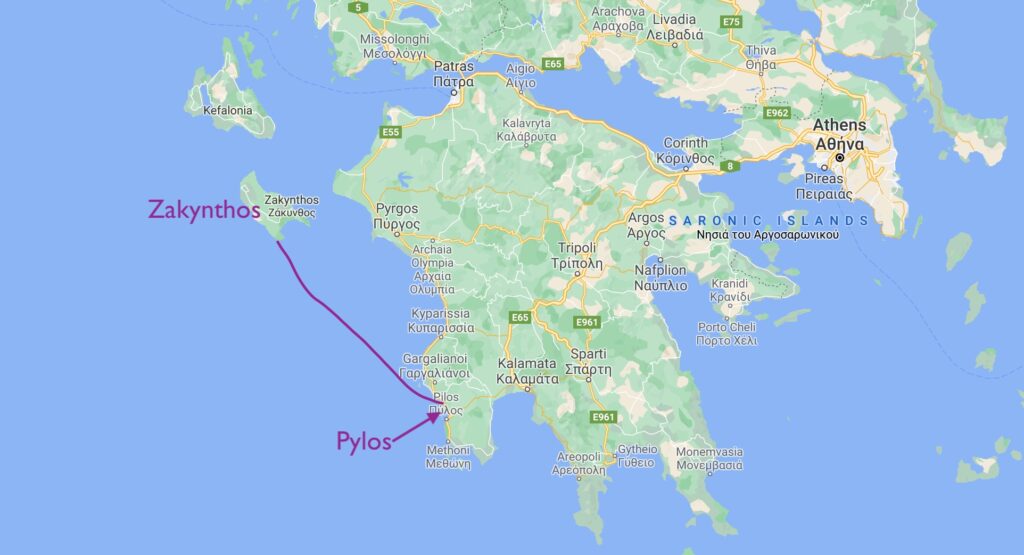
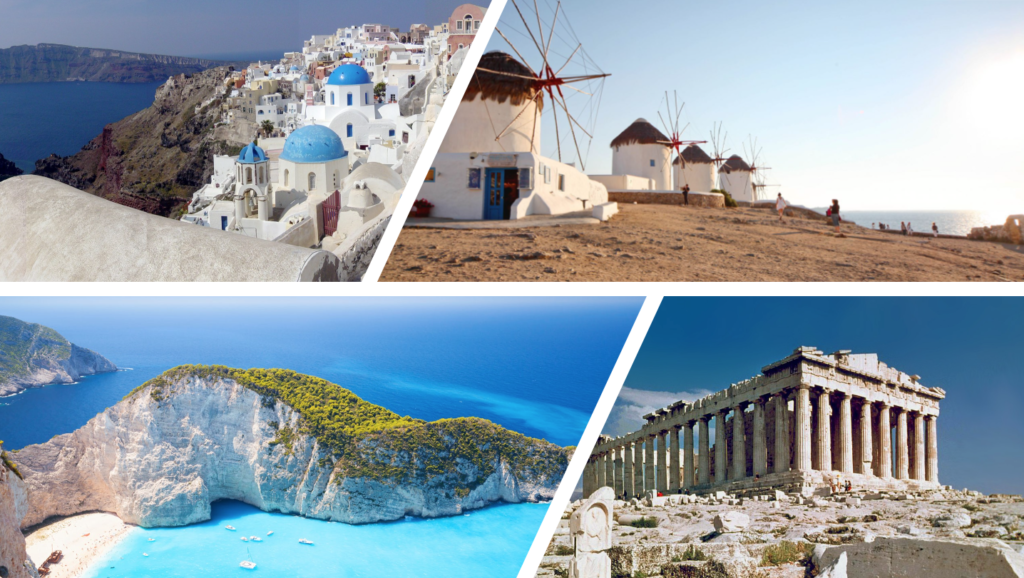
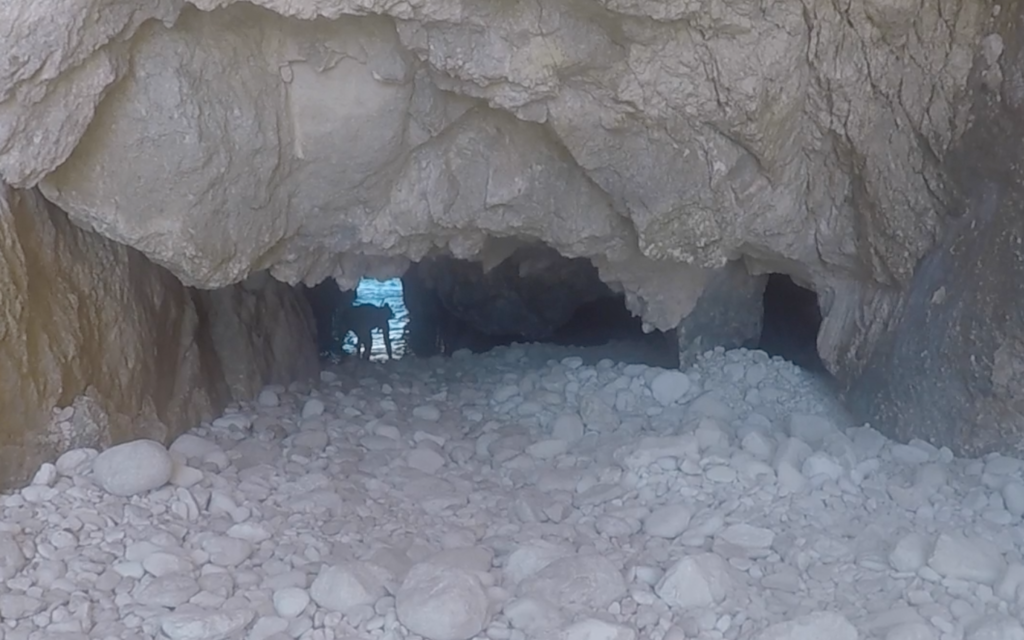
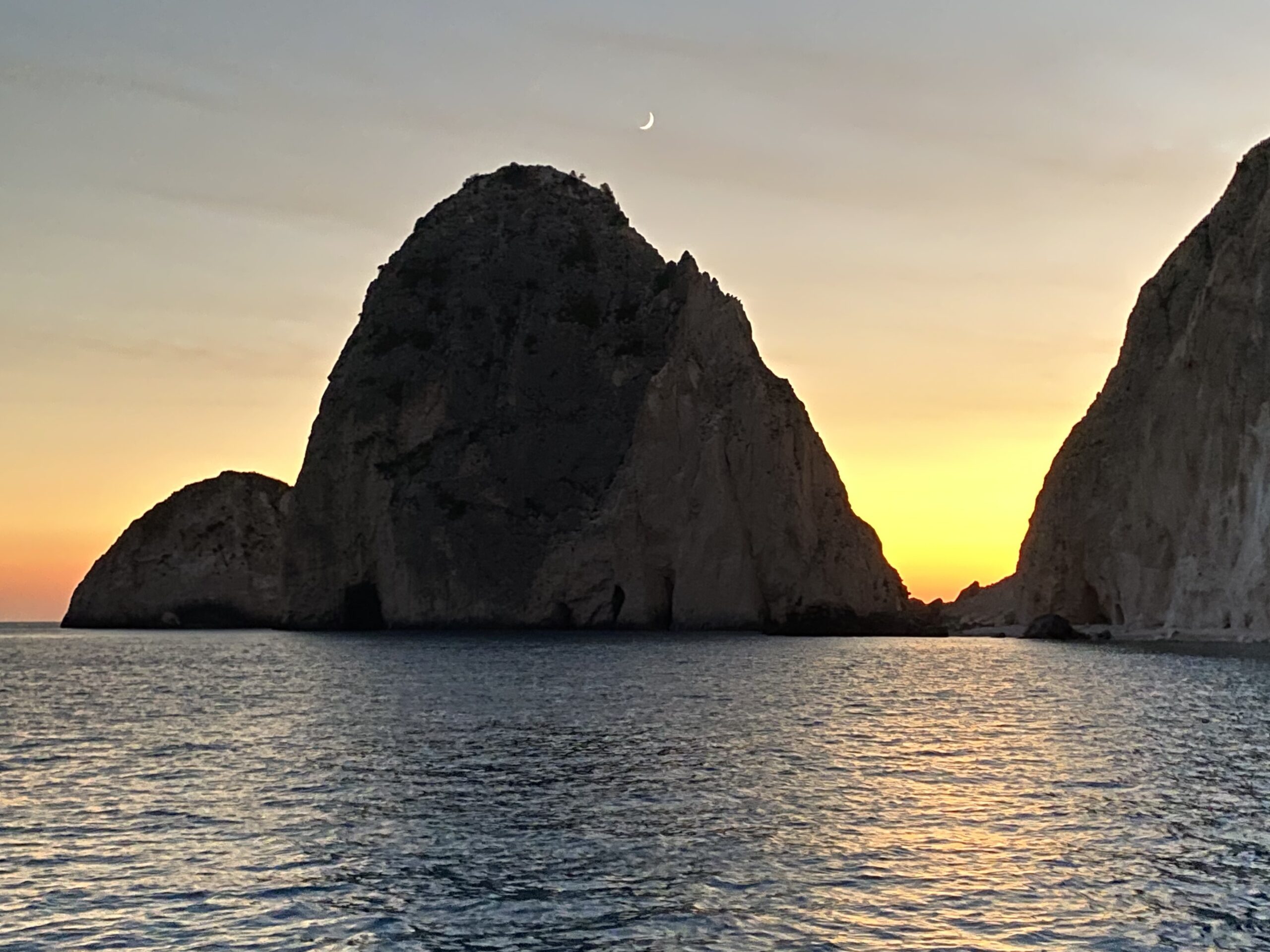
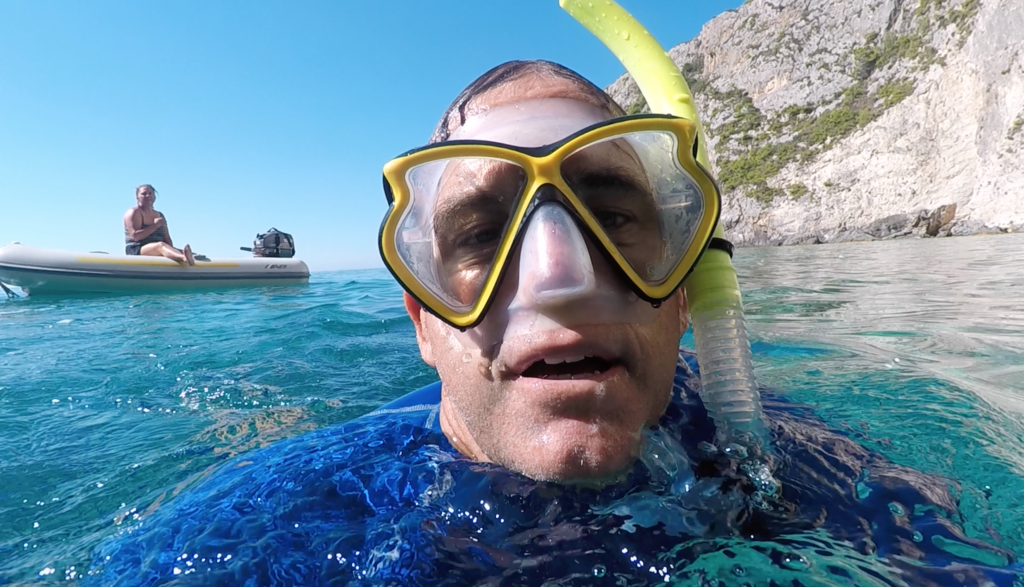
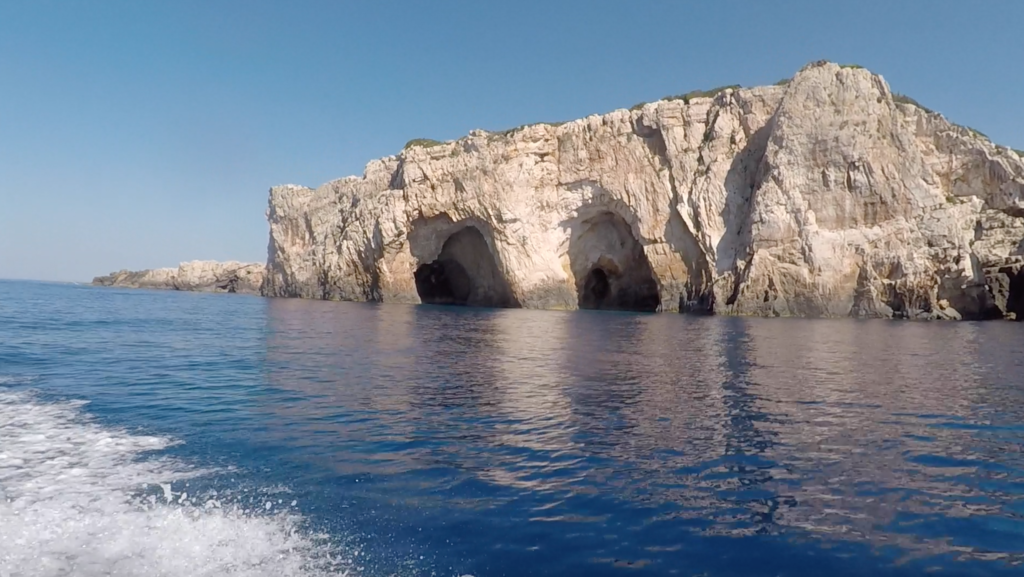
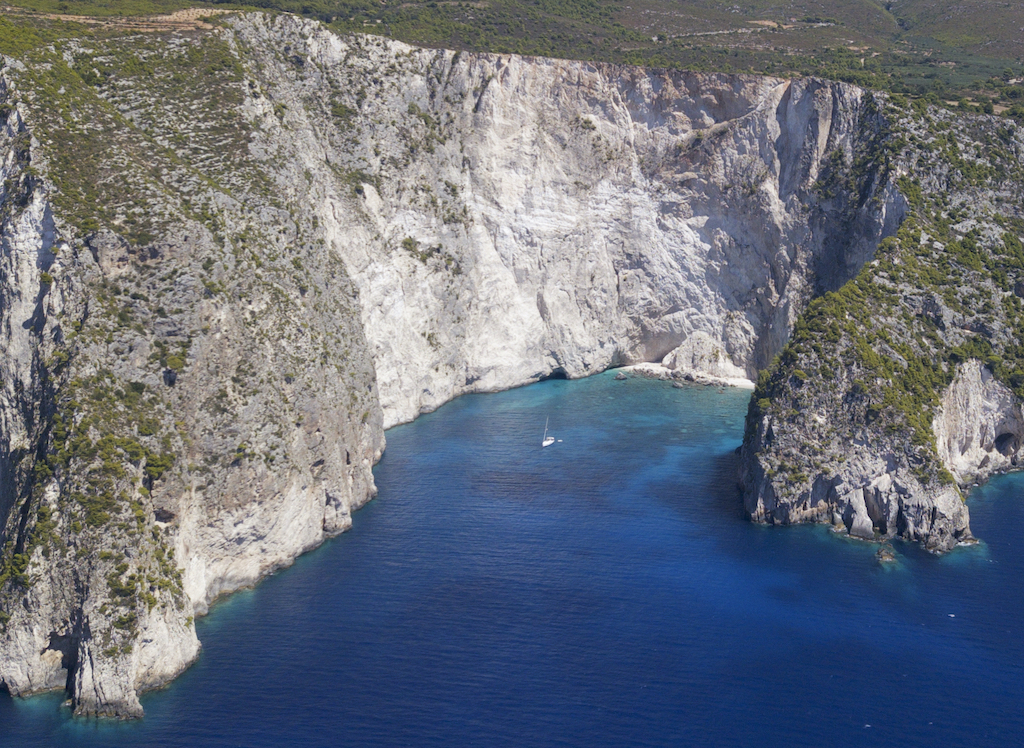
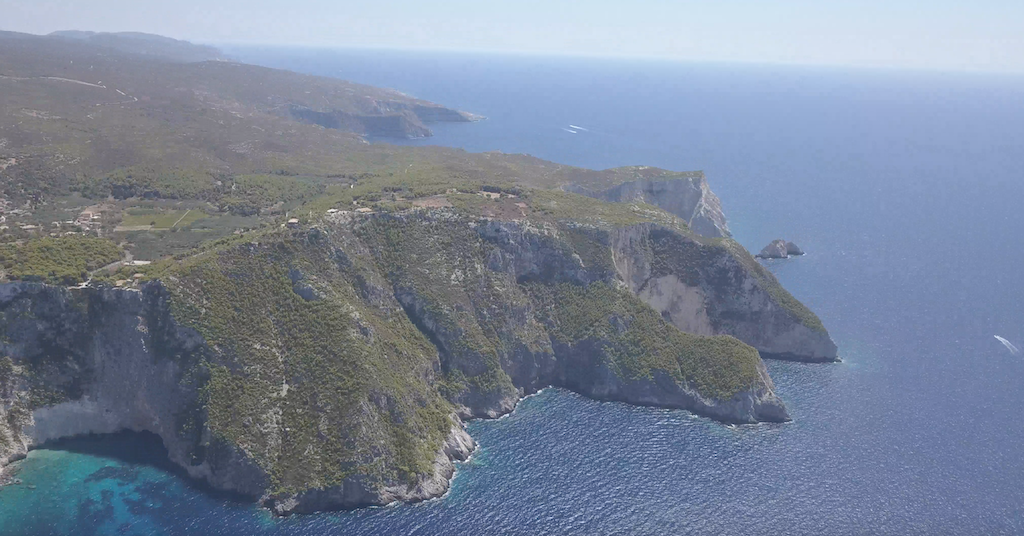
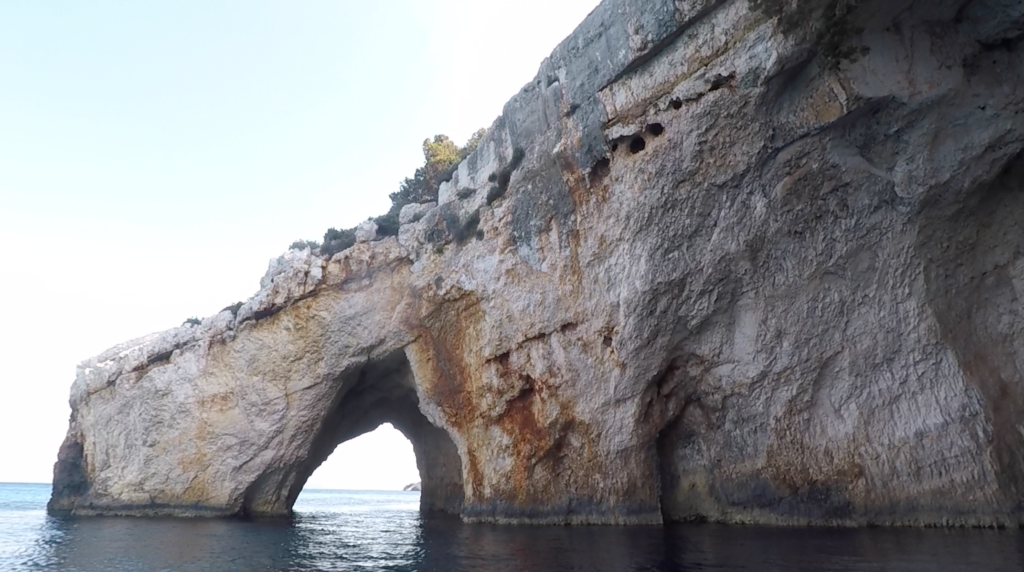
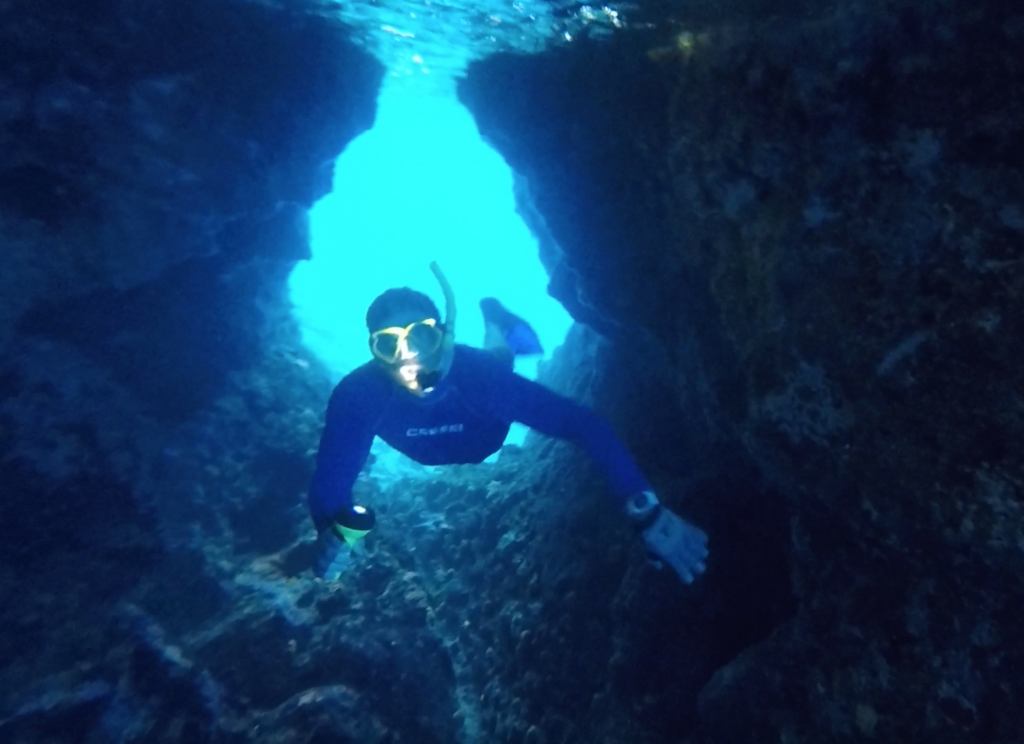
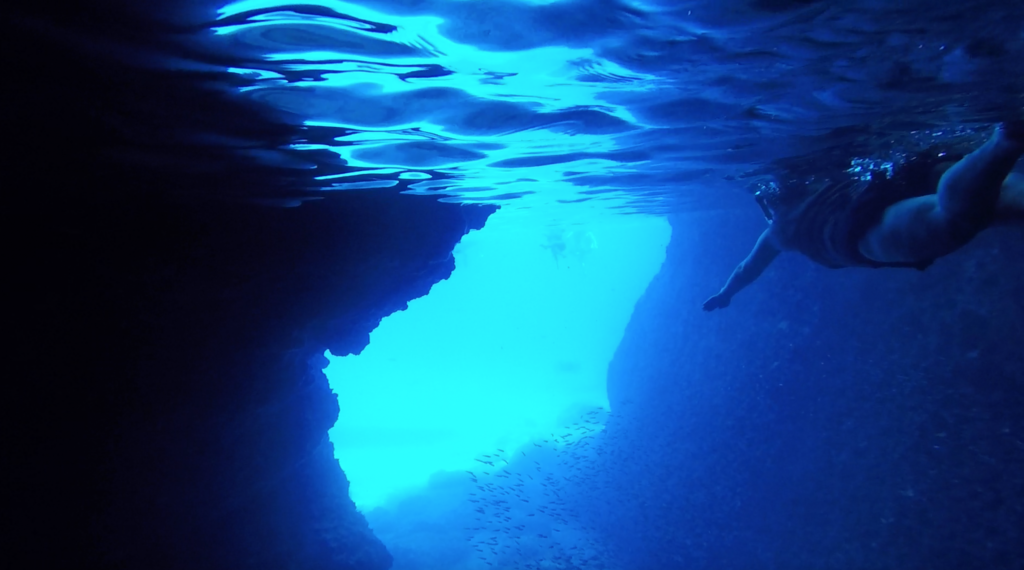
Enjoyed your tales of the adventure. Makes me want to visit Greece
Thanks Martin! If you get a chance when covid settles down, you definitely should. Take care!